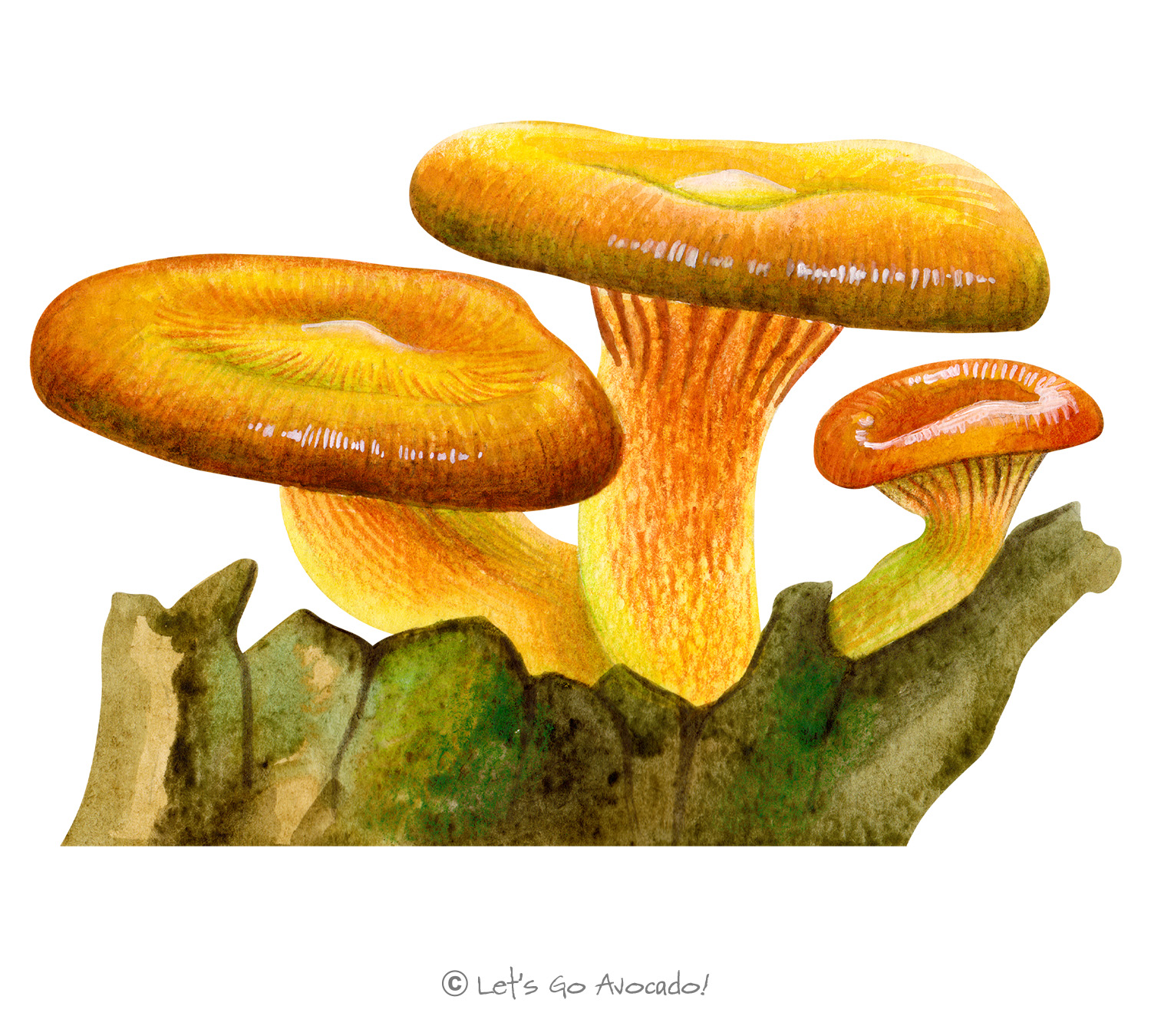

Eastern American Jack O’ Lantern
Jack O' Lantern, False Chanterelle
Omphalotus illudens
This page may contain affiliate links.
Read our disclosure and privacy policy here.
The Eastern American Jack O’ Lantern mushroom is a gilled fungus known for its bright orange hue. Its name stems from its bioluminescent properties: the gills of mature specimens can emit a faint greenish glow in the dark. While visually appealing, this mushroom is toxic and can cause severe gastrointestinal symptoms if consumed.
Eastern American Jack O’ Lantern
Common Name
Eastern American Jack O’ Lantern
Other Names
Jack O’ Lantern, False Chanterelle
Latin Name
Omphalotus illudens
Distribution
Predominantly in the eastern parts of North America.
Appearance
Bright orange cap, gills, and stem. Unlike true chanterelles, which they can be confused with, the Jack O’ Lantern has true blade-like gills that are sharply attached to the stem. The aforementioned bioluminescence of its gills is also a defining trait.
Size
The cap diameter usually ranges from 5 to 20 cm, with a similar height for its stem.
Habitat
This mushroom often grows on decaying hardwood stumps or buried wood.
Diet
Saprotrophic, feeding on decaying wood.
Lifecycle
Starts as spores, which germinate into myceliumMycelium is like the ‘root’ or the ‘body’ of a fungus. Just as plants have roots, fungi have mycelium. It is made up of tiny thread-like structures called hyphae that spread out in the soil or other materials where the fungus grows. Learn More underground or within wood. When conditions are favorable, the mycelium will produce fruiting bodies (the mushrooms), which, once mature, release spores to continue the cycle.
Defense Mechanisms
The mushroom contains compounds that are toxic to humans, inducing symptoms like vomiting, cramps, and diarrhea. This deters potential predators from consuming it.
Ecological Importance
By breaking down dead and decaying wood, it plays a vital role in nutrient cycling within forest ecosystemsAn ecosystem is a community of living organisms, like insects and birds, and non-living components, like water and rocks, that interact with each other in a specific area. Learn More.
ConservationThe act of protecting and preserving natural resources and the environment. Conservation efforts are important to protect beavers and their habitats. Status
Common in its range and not considered endangered.

There’s a lot to explore right where we are, in our own neighborhoods and backyards! Join us while we get off the couch and explore the everyday wonders of nature, science, space, engineering, art, and anything else we stumble upon during on our adventures.







